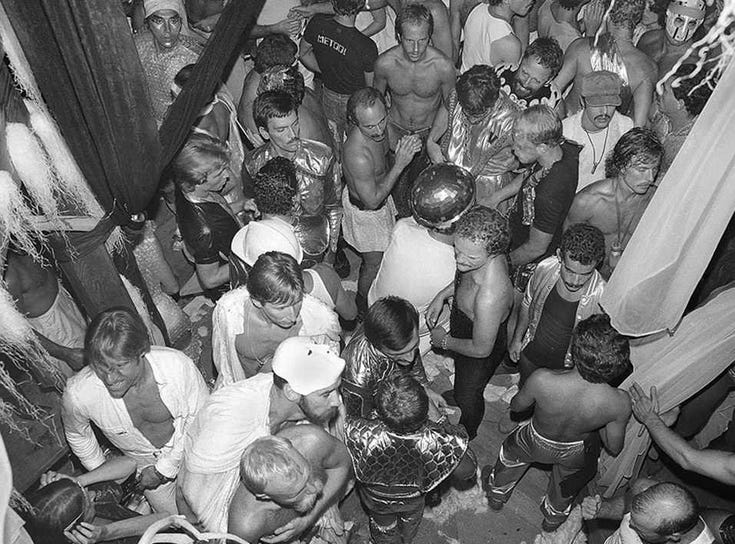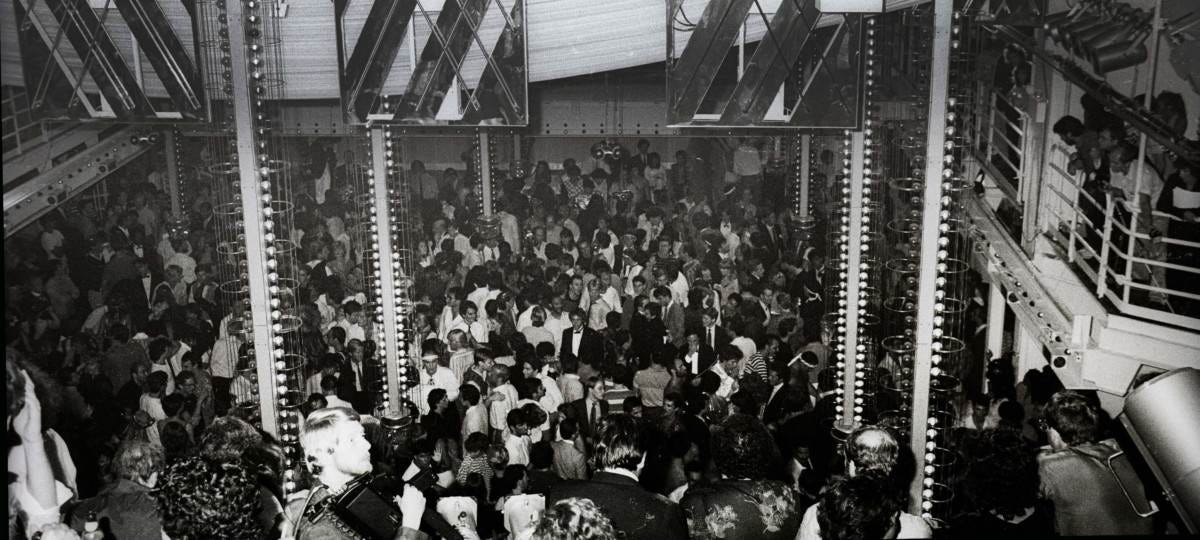The Early Days of HIV/AIDS - The Golden Age: 1976-1980
24 Hour Party, Strength in Numbers, Cultural Cachet, Establishing Professional Networks, Amassing Power, Sex As Alpha&Omega, Doubling Down on Elevated Risks
“Star Wars” Party in the Pines on Fire Island, NY, 1977 - Fire Island Pines Historical Preservation Society
Previous Entry - Setting the Stage: 1969-1975
In the mid-1990s, the Canadian Province of Ontario decided to open government-controlled gambling casinos in order to extract more money from its own citizens, as well as the tourists who would make their way to these establishments. Prior to this, gambling was restricted to horse racing, charity events, and illegal venues run by various organized criminal groups. The result was a revenue windfall that encouraged the expansion of this scheme elsewhere in Ontario.
The legalization of gambling served to give the once-underground activity a fig leaf of legitimacy. What this served to do was to introduce gambling to huge swathes of people who would have never, ever considered placing a bet prior to this, as to do so would have meant that they would have to deal with unsavoury (and potentially violent) elements. Housewives flush with cash wouldn’t be caught dead at an all-night poker event in some dingy basement, where they would be eyed carefully by Calabrians making sure that they continued to bet until they went broke. These housewives sure did love sitting in front of a slot machine for hours on end though, the flashing lights and the mechanical noise manipulating their brains into pressing their luck just one more time.
It wasn’t too long after legalization that people began to talk about how so-and-so didn’t tell his wife that he was borrowing money to go down to Niagara Falls one more time to try his luck at the poker table, or how another so-and-so lost her house and her husband as she took the mortgage money and spent the whole of Saturday either pressing buttons or trying her luck at the roulette table. These stories were commonplace. I can list at least two dozen examples of homes that were wrecked by the legalization of gambling. These same homes would be intact today if the doors to those casinos were never opened in the first place.
Not everyone who went to the casino ended up losing everything. Despite the odds always being in favour of the house, most people managed to have self-control and went to gamble “just for fun”. They were casuals. Other people got hooked relatively quickly, making gambling their primary outlet for enjoyment and raising the stakes by becoming more adventurous in the process. Dollar machines gave way to five dollar machines, which led to the roulette table, and then to shooting craps. “Thrill seeking” demanded that this psychological type keep trying new and riskier games because they were bored of the ones that they were already playing.
People titter and laugh when you tell them that marijuana is a gateway drug. It sounds silly to Gen Xers, and I can only imagine how corny it sounds to Millennials and Zoomers. But it is 100% true. A line is crossed when you smoke that first joint, and thanks to the relative harmlessness of marijuana when compared to harder drugs, a person will think to themselves “it’s not that bad at all”. Like gambling, many people will make this their first and final stop. Others will seek newer and riskier highs. The same applies to pornography; many males (and I assume some females as well) have to keep searching for more hardcore or niche variants in order to continue to feel sexually stimulated and turned on, because the “vanilla” stuff simply “doesn’t do it anymore”. We all know people like this, and some of them end up with seized hard drives and prison time (I know of at least two guys who were friends of friends that this happened to).
Yes, with freedom comes responsibility. But freedom needs checks on behaviour as not all people are the same. Sometimes even those checks come too late, as the damage has already been done.
Strength in Numbers
By 1976, America was catching up with the coastal elites and youth culture of the 1960s that had turned away from the mores of the Eisenhower Era. This adoption was not uniform, but it had made significant inroads in suburbia and small and mid-sized towns across the country. Men grew their hair out, women wore shorter skirts, jeans began to flare out, an a culture of permissiveness towards sex and drugs took hold. To be “square” and “unhip” was a social crime in many places. Rock’n’Roll became a lifestyle to emulate, at least for a bit.
Liberalization gave way to libertinism and hedonism, especially as the political radicalism of the late 1960s and early 70s dissipated with the end of the Vietnam War. Not all were happy about this development (including the gay community), but gays uncomfortable with this de-politicized gay existence did not want to spoil the fun, as they too enjoyed this new era of unlimited personal freedom.
Gay communities in New York City, Los Angeles, San Francisco (and elsewhere) had by 1976 developed their own parallel communities with their own functioning ecosystems providing them gay-specific services like travel agencies, clothing stores, doctors, and so on. A gay man at that time could voluntarily remove himself from the straight world if he chose to do so by locating himself in one of these geographical settings. He was free to pursue a gay lifestyle in a setting surrounded by others just like him, seeking the same thing that he was searching for. The infrastructure had been erected to cement the existence of these self-enclosed communities.
Studio 54 in its heyday
In New York City, a ‘gay chic’ had come into being. Creative types were feted, and they mingled with straight celebrities who hoped to gain some cachet in being seen with them. Nowhere was this more evident than at the legendary Manhattan nightclub Studio 54, where Halston and Andy Warhol rubbed shoulders with the likes of Liza Minelli, Brooke Shields, Mick Jagger and David Bowie. Disco music was the sound of the nightlife, and it was powered by cocaine.
Professional gay networks began to blossom as well in places like New York City and Los Angeles, giving rise to the ‘Gay Mafia’. Gay men were looking out for one another, assisting each other in their professional development, creating empires that they controlled and personally benefited from. They were amassing cultural and financial power in the straight world.
Cultural and financial power eventually leads to political power, with San Francisco taking pole position for gay men in the USA. Out of a total city population of 660,000 by 1980, 100,000 of those were gay men.1 Thanks to changes in city electoral laws, Harvey Milk, an openly gay man, was elected to the San Francisco Board of Supervisors in 1978 (he was assassinated later that year, alongside Mayor George Moscone). The sheer weight in numbers of gay men in San Francisco gave them an enormous presence in city politics when compared to other gay centres in the country. “You go to San Francisco to be gay”, explained gay artist Daniel Goldstein, on why he chose that city over New York or Los Angeles in which to pursue his career.2





